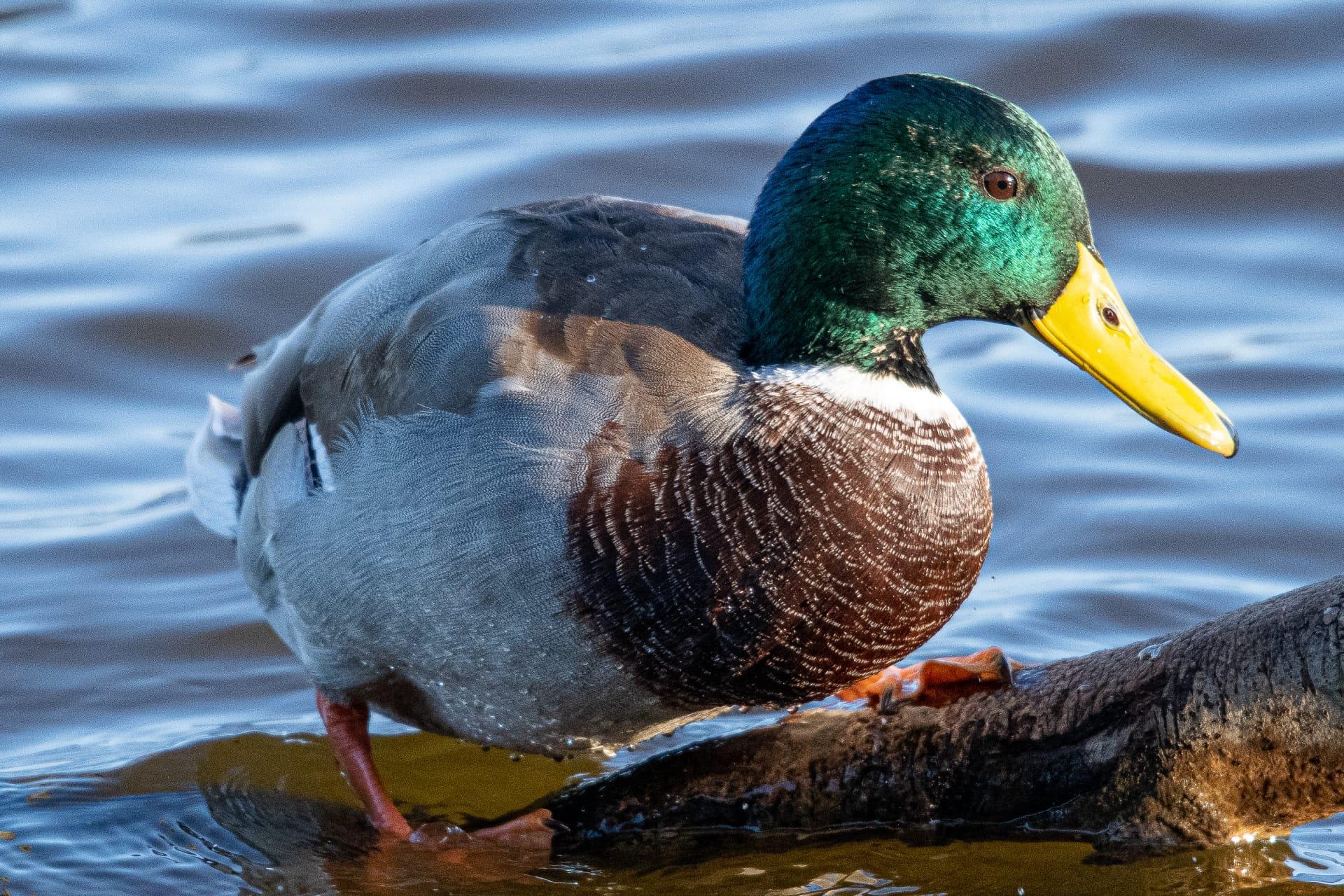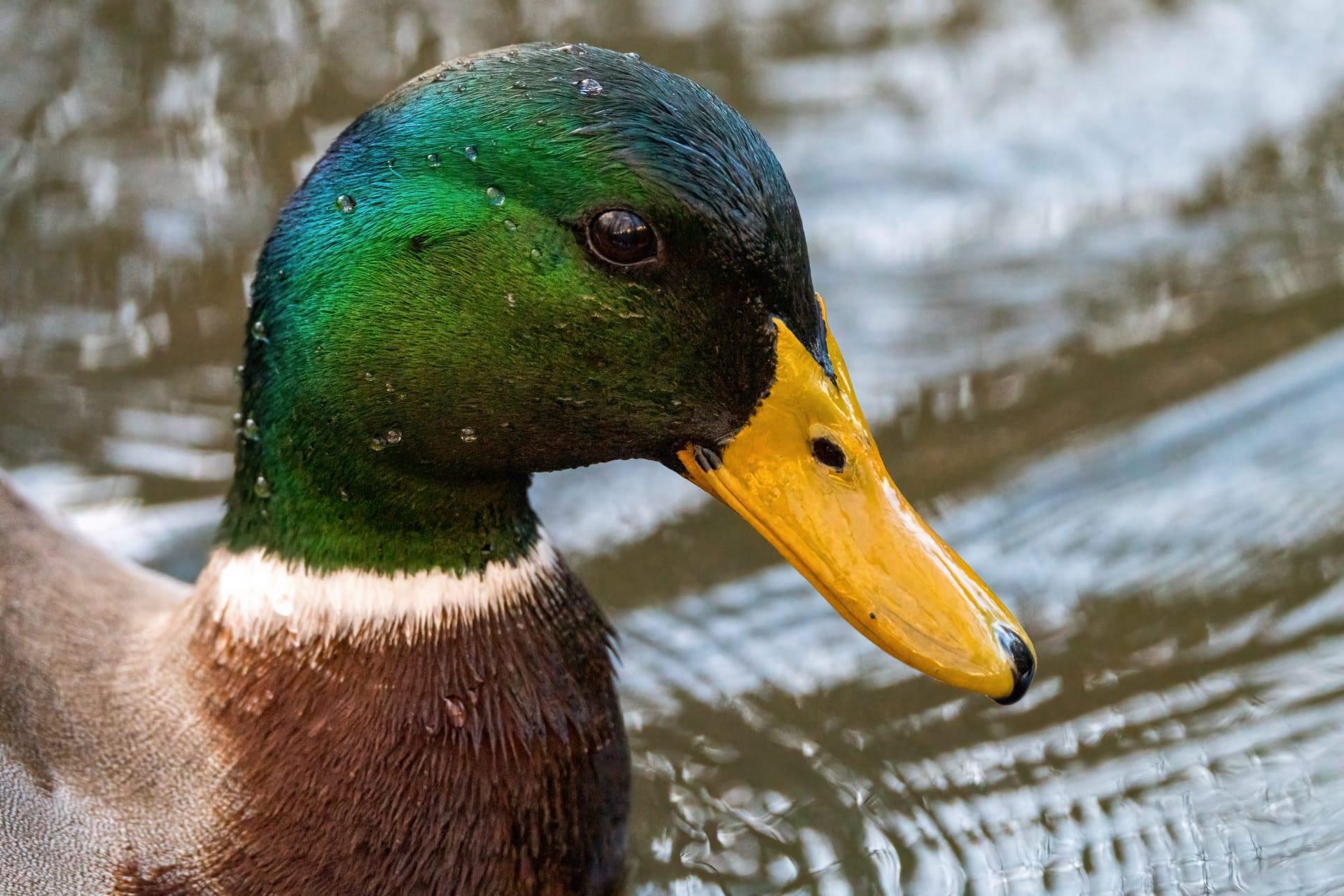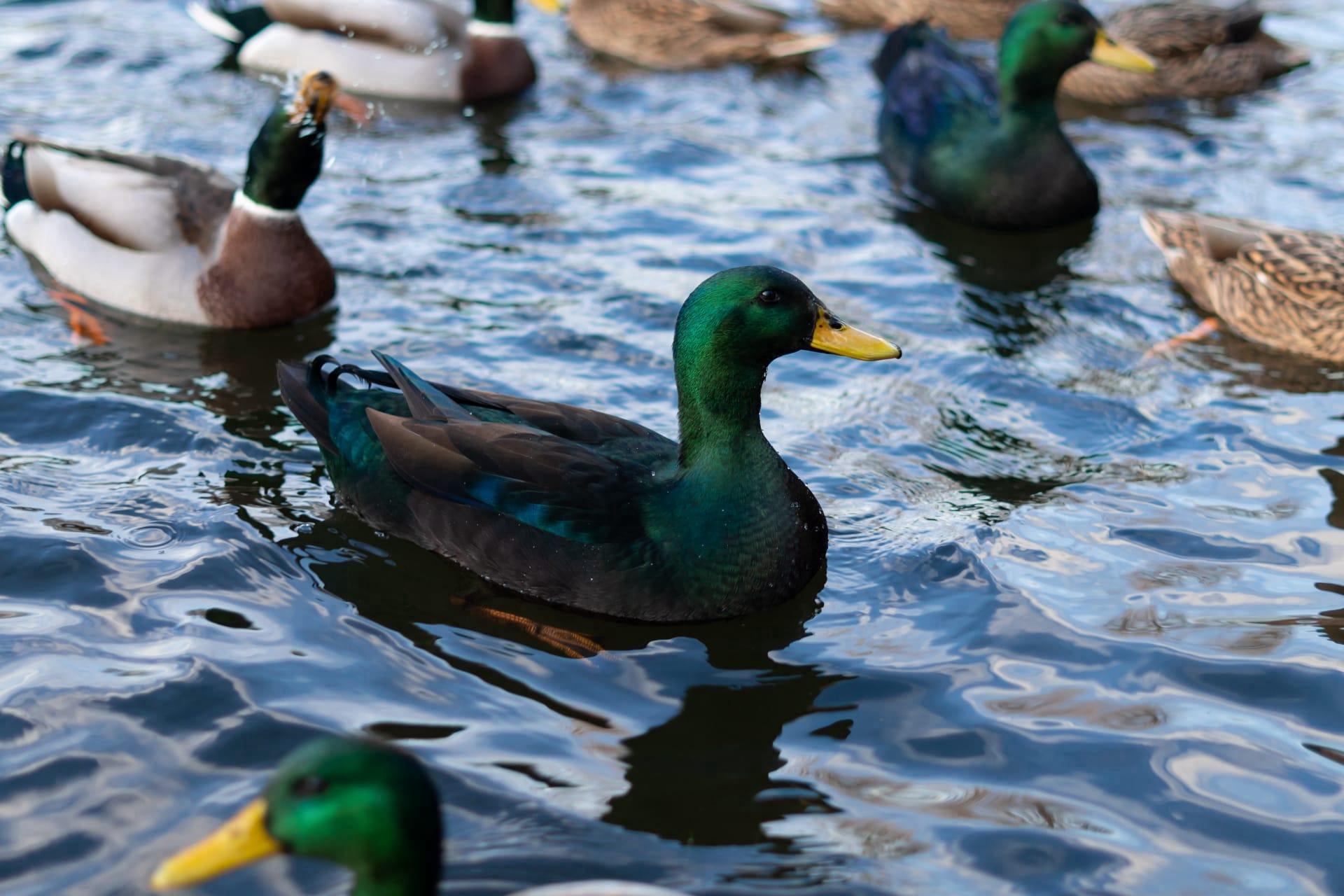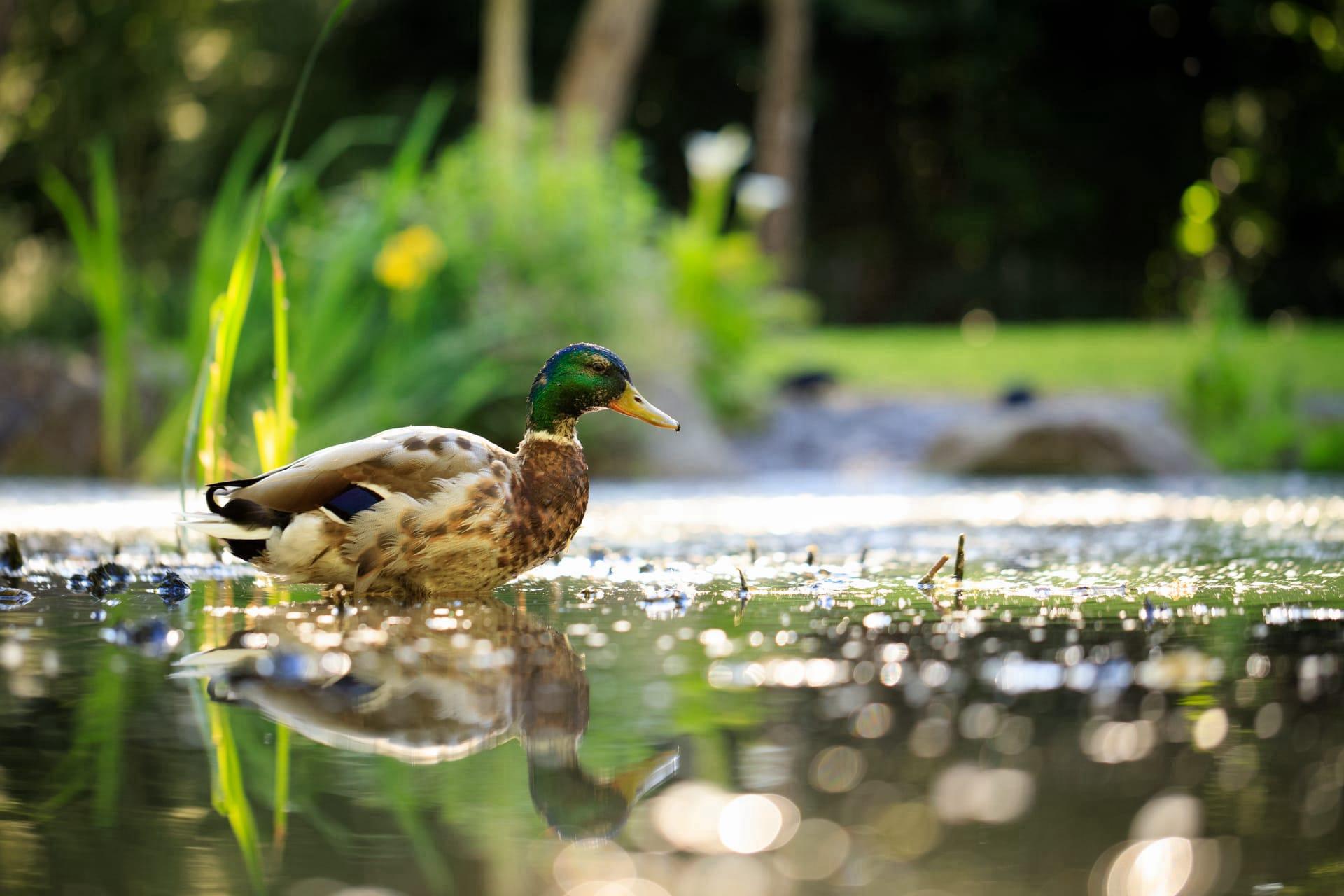1
Teals, a group of small ducks known for their agility, have a surprising talent for vertical take-off. Imagine a helicopter's lift-off, and you've got a good picture of how teals launch themselves into the air. This ability is rare among ducks, who typically require a running start to get airborne. Teals, however, can spring up almost instantly, thanks to their strong leg muscles and rapid wingbeats. This swift ascent not only makes them nimble fliers but also aids in evading predators.
Another fascinating aspect of teals is their migration patterns. Unlike some birds that travel solo, teals often migrate in large groups, sometimes forming flocks of several thousand. They're known to cover impressive distances, with some species migrating over 3,000 miles each season. During these long journeys, they navigate using a combination of the stars, the Earth's magnetic field, and even the position of the setting sun. This remarkable navigation skill ensures that they return to the same breeding grounds year after year.

2
Teals have a unique approach to nesting and raising their young. Unlike many other bird species, teals often nest far from water bodies, sometimes up to several kilometers away. This unusual strategy helps protect their nests from aquatic predators. The female teal meticulously camouflages her nest with surrounding vegetation, making it almost invisible to the untrained eye. She's also known for her dedication, often returning to the same nesting site year after year, which adds an emotional touch to their nesting behavior.
When it comes to diet, teals are not picky eaters. These ducks are omnivorous and have a varied diet that includes aquatic plants, seeds, small fish, and insects. What's interesting is their foraging method. Teals often tip up in the water, with their tails sticking up and heads submerged, to reach food at the bottom of shallow waters. This amusing posture not only provides them with nourishment but also offers a whimsical sight for bird watchers.

3
The coloration of teals is another captivating feature. Males, especially during the breeding season, display vibrant plumage with striking colors and patterns. The most notable is the bright green patch, or speculum, on their wings, which stands out during flight and is a key identification marker. This vivid coloration is not just for show; it plays a crucial role in courtship displays and territory defense. The females, on the other hand, wear more subdued tones, primarily in browns and tans, which offer excellent camouflage while they incubate eggs and raise their young.
Teals are also known for their vocalizations, which vary significantly between species and sexes. The males typically produce a high-pitched peeping or whistling sound, particularly during mating season as part of their courtship ritual. Females, conversely, have a more subtle quack, often used as a call to their ducklings or as an alarm signal. These distinct sounds not only facilitate communication within the species but also add a delightful auditory dimension to their habitats.

4
Regarding their lifespan, teals generally have a shorter life expectancy compared to larger duck species. In the wild, they typically live for about 5 to 6 years, although in captivity, this can extend up to 10 years with proper care. Predation, habitat loss, and environmental factors significantly influence their lifespan. However, their quick reproduction rate helps maintain their population, with females laying an average of 8 to 11 eggs per clutch.
Teals have an intriguing social structure. Outside of the breeding season, they are highly sociable and often gather in mixed-species groups, alongside other waterfowl. This behavior not only offers safety in numbers but also creates a dynamic ecosystem where different species interact. During the breeding season, however, they become more territorial and solitary, focusing on mating and raising their young. This shift from sociable to solitary behavior highlights their adaptability to different environmental and social conditions.

5
Migration is a key aspect of teal life, but did you know that not all teal species migrate? While many travel long distances between breeding and wintering grounds, some populations, especially those in temperate regions, are non-migratory. These resident teals adjust their habits and diet to the changing seasons, showcasing their remarkable adaptability to different environments.
Lastly, teals play a significant role in their ecosystems. As both prey and predator, they contribute to the balance of their habitats. They control the populations of insects and aquatic plants, while also serving as a food source for larger animals. This dual role underscores the importance of conserving teal populations and their habitats, as they are crucial for maintaining the health and diversity of wetland ecosystems.